
13 minute read
Walking in Literature
WALKING IN LITERATURE

Advertisement
Rainer Maria Rilke
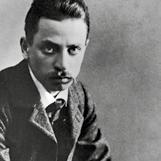
Trieste è tante cose, forse troppe. E anche la sua immagine, il modo e i motivi per cui è conosciuta altrove è un’immagine sfaccettata: la città della bora, della Barcolana, della scienza, del caffè. Ma è anche sicuramente, la città della letteratura. Quale altra cittadina di queste dimensioni può vantarsi di esser stata uno dei più importanti centri di elaborazione e sviluppo della letteratura modernista europea dando vita, in soli tre anni di cui a breve ricorrerà il centenario, al Canzoniere di Saba (1921), all’Ulisse di Joyce (1922) e alla Coscienza di Zeno di Svevo (1923)? Per non dire che in quello stesso 1923 Rilke pubblica quelle Elegie che, per essere duinesi, non possono che far parte di questa storia anch’esse.
Questa è la città in cui gli autori “minori” sono giganti come Scipio Slataper, Vladimir Bartol, Srečko Kosovel, Fulvio Tomizza e via elencando. È la città in cui hanno lavorato e di cui hanno scritto i consoli Richard Francis Burton, Charles Lever, Henri Beyle (Stendhal) e Paul
Morand. La città in cui sono stati scritti capolavori in molte lingue e un potente dialetto. La città in cui la tradizione letteraria è sempre viva con autori noti e tradotti in tutto il mondo fra cui Boris Pahor e Claudio Magris.
Se facciamo un giro per il centro ci accorgiamo immediatamente che ogni muro, ogni via, ogni piazza e gli stessi palazzi che sembrano di solida pietra e marmo, in realtà, sono di carta. Carta scritta.
Cominciamo dalla Stazione dei treni [1], luogo di arrivo per eccellenza. E infatti è qui che il 20 ottobre del 1904 James Joyce arriva a Trieste, riuscendo nella difficile impresa di farsi arrestare pochi minuti dopo (per un equivoco). Poco più avanti, incontriamo quello che proprio Joyce in una lettera al suo amico Italo Svevo definiva “Il canal che viene da lontano per sposare il gran divo, Antonio Taumaturgo [ossia la chiesa neoclassica che si vede lì in fondo, ndr] e poi cambiato parere se ne torna com’è venuto”. Non è un caso se proprio qui una statua di Joyce [2], con svagato incedere, eternamente passeggia.
Proseguiamo lungo le rive, svoltiamo
a sinistra fra la chiesa greco-ortodossa di San Nicolò e il Caffé Tommaseo [3], celebre anche per una poesia di Umberto Saba. Più su in questa stessa via, al numero 30 –casualmente lo stesso indirizzo della “Berlitz School” la scuola di lingue per cui lavorava Joyce– c’è ancora la sua libreria antiquaria [4], con la stessa immutabile atmosfera e, poco lontano, la statua che lo ricorda.
Pochi metri e siamo nel ghetto [5], quello che Saba dipinge a vividissimi colori nei suoi Ricordi-Racconti e che anche Svevo frequentava da bambino per andare alla sinagoga.
Infine sbuchiamo in piazza Unità, proseguiamo per il vivace quartiere di Cavana e giungiamo alla quiete alberata di piazza Hortis [6]: qui sorge lo storico palazzo della Biblioteca Civica che praticamente tutti gli scrittori che abbiamo nominato fin qui hanno conosciuto e frequentato.
Qui troviamo la statua di Svevo, che della biblioteca ha scritto con affetto e qui, proprio di fronte a lui, sorgerà il nuovo LETS, il Museo della Letteratura a Trieste che questa storia racconterà ancora e ancora.
James Joyce
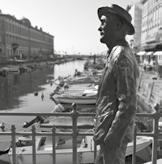
3 Caffè Tommaseo
5 Ghetto ebraico
2
Statua di James Joyce
4
Libreria Antiquaria Umberto Saba
Piazza Hortis 6
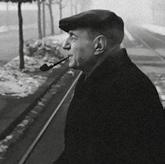
Umberto Saba
Se facciamo un giro per il centro di Trieste ci accorgiamo che ogni muro, ogni via, ogni piazza e gli stessi palazzi che sembrano di solida pietra e marmo, in realtà, sono di carta. Carta scritta. –Strolling around Trieste city centre, you realize that every wall, street, square and building that seem to be solid stone and marble are actually made of paper. Written paper.
ENGLISH TEXT
Trieste is many things, perhaps too many. And for this reason the image it conveys is multi-faceted: it is known as the city of the Bora, of the Barcolana, of science, of coffee. But definitely it is also the city of literature.
There is no other city of this size that can be proud of having been one of the most important centres for the creation and development of European modernist literature. The span of just three years brought to light the Canzoniere by Saba (1921), Joyce’s Ulysses (1922) and Zeno’s Conscience by Svevo (1923). The 100th anniversary of this time will soon be celebrated. Moreover, during the same years, in 1923, Rilke published the Duino Elegies that are indeed part of this story too.
This is the city where “minor” authors are actually “literary giants” such as Scipio Slataper, Vladimir Bartol, Srečko Kosovel, Fulvio Tomizza and so on. This is the city where Consuls such as Richard Francis Burton, Charles Lever, Henri Beyle (Stendhal) and Paul Morand worked and wrote. It is the city where masterpieces have been written in many languages and a powerful dialect. A city where its literary tradition is still alive with famous writers whose works have been translated all over the world, among which are Boris Pahor and Claudio Magris.
If you stroll around the city centre, you realize immediately that every wall, street, square and building that appear to be made of solid stone and marble, are actually made of paper. Written paper.
Let’s start our walk from the Train Station [1], the place of arrival par excellence. Here, on 20 October 1904 James Joyce arrived in Trieste and managed to be arrested a few minutes later (for a misunderstanding). Walking just a bit further, you come across what Joyce in a letter to his friend Italo Svevo
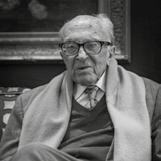
Boris Pahor
called “The canal coming from far away to marry the great celebrity, Antonio Taumaturgo [i.e. the neoclassical church you can see down there, N/T] and then, changing his mind goes back as it came”. It is not by chance that Joyce’s statue [2] has been placed here, leisurely walking into eternity.
If you continue along the waterfront, turn left between St. Nicholas GreekOrthodox church and Café Tommaseo [3], also famous for a poem written by Umberto Saba. Along this street, at number 30 – accidentally the same address of the “Berlitz School”, the language school where Joyce worked – there is his antiquarian bookshop [4] that plunges visitors into the same timeless atmosphere. The statue resembling him stands nearby.
A few more metres and you reach the ghetto [5], the one that Saba describes with bright colours in his “Ricordi–Racconti” [Memories-Stories N/T]. Also Svevo when he was a child used to walk through this neighbourhood to go to the synagogue.
The walk continues to piazza Unità and through the lively district of Cavana and as far as the quiet tree-lined piazza Hortis [6]: here the historical building of the Municipal Library stands, a place where almost all the writers mentioned herein have been.
Svevo’s statue stands right in front of the library that he loved so much. The building will house LETS, the new Literature Museum of Trieste that will tell this story over and over again.
La grande tradizione letteraria che una passeggiata per il centro della città ci racconta è all’origine della scelta dell’amministrazione comunale di candidare Trieste a città creativa dell’UNESCO per la letteratura. Se l’operazione avrà successo, in novembre Trieste entrerà a far parte di un network di 180 città di tutto il mondo che hanno scelto di fare della creatività un motore di sviluppo sostenibile. Ma di fatto Trieste è già una città della letteratura e i progetti intesi a sviluppare le sue potenzialità –nel campo del turismo culturale ma non solo– non sono occasionali. Sono già in corso i lavori per la realizzazione del nuovo LETS, il museo della letteratura a Trieste che darà vita anche a una casa editrice, LETS Print; allo stesso tempo si lavora ai nuovi itinerari culturali Trieste Metro che alla letteratura dedicheranno un percorso specifico; verrà data attenzione all’innovazione con i progetto di digital humanities e si potenzieranno i programmi di promozione della lettura e di lotta alla povertà educativa (LETS Grow); infine, sotto la sigla LETS Wonder, si prevede di realizzare un importante archivio-museo e una mostra internazionale annuale della letteratura per bambini.
The great literary tradition you can enjoy by simply strolling around the city centre is the reason that has led the municipal administration to submit Trieste’s application to become a UNESCO Creative City of Literature. In the event of a successful membership, Trieste will join a network of 180 cities all over the world that have chosen to place creativity at the core of sustainable development strategies. In fact, the works for the creation of the new LETS have already started. Trieste’s literature museum will also start a new publishing house, LETS Print; new cultural itineraries with Trieste Metro; programmes to promote reading and overcome educational poverty (LETS Grow); finally LETS Wonder will create and archivemuseum and an international yearly exhibition of children’s literature.
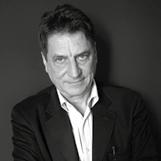
WALKING IN LITERATURE


Trieste è tante cose, forse
troppe. E anche la sua immagine, il modo e i motivi per cui è conosciuta altrove è un’immagine sfaccettata: la città della bora, della Barcolana, della scienza, del caffè. Ma è anche sicuramente, la città della letteratura.
Quale altra cittadina di queste dimensioni può vantarsi di esser stata uno dei più importanti centri di elaborazione e sviluppo della letteratura modernista europea dando vita, in soli tre anni di cui a breve ricorrerà il centenario, al Canzoniere di Saba (1921), all’Ulisse di Joyce (1922) e alla Coscienza di Zeno di Svevo (1923)? Per non dire che in quello stesso 1923 Rilke pubblica quelle Elegie che, per essere duinesi, non possono che far parte di questa storia anch’esse.
Questa è la città in cui gli autori “minori” sono giganti come Scipio Slataper, Vladimir Bartol, Srečko Kosovel, Fulvio Tomizza e via elencando. È la città in cui hanno lavorato e di cui hanno scritto i consoli Richard Francis Burton, Charles Lever, Henri Beyle (Stendhal) e Paul
Morand. La città in cui sono stati scritti capolavori in molte lingue e un potente dialetto. La città in cui la tradizione letteraria è sempre viva con autori noti e tradotti in tutto il mondo fra cui Boris Pahor e Claudio Magris.
Se facciamo un giro per il centro ci accorgiamo immediatamente che ogni muro, ogni via, ogni piazza e gli stessi palazzi che sembrano di solida pietra e marmo, in realtà, sono di carta. Carta scritta.
Cominciamo dalla Stazione dei treni [1], luogo di arrivo per eccellenza. E infatti è qui che il 20 ottobre del 1904 James Joyce arriva a Trieste, riuscendo nella difficile impresa di farsi arrestare pochi minuti dopo (per un equivoco). Poco più avanti, incontriamo quello che proprio Joyce in una lettera al suo amico Italo Svevo definiva “Il canal che viene da lontano per sposare il gran divo, Antonio Taumaturgo [ossia la chiesa neoclassica che si vede lì in fondo, ndr] e poi cambiato parere se ne torna com’è venuto”. Non è un caso se proprio qui una statua di Joyce [2], con svagato incedere, eternamente passeggia.
Proseguiamo lungo le rive, svoltiamo
a sinistra fra la chiesa greco-ortodossa di San Nicolò e il Caffé Tommaseo [3], celebre anche per una poesia di Umberto Saba. Più su in questa stessa via, al numero 30 –casualmente lo stesso indirizzo della “Berlitz School” la scuola di lingue per cui lavorava Joyce– c’è ancora la sua libreria antiquaria [4], con la stessa immutabile atmosfera e, poco lontano, la statua che lo ricorda.
Pochi metri e siamo nel ghetto [5], quello che Saba dipinge a vividissimi colori nei suoi Ricordi-Racconti e che anche Svevo frequentava da bambino per andare alla sinagoga.
Infine sbuchiamo in piazza Unità, proseguiamo per il vivace quartiere di Cavana e giungiamo alla quiete alberata di piazza Hortis [6]: qui sorge lo storico palazzo della Biblioteca Civica che praticamente tutti gli scrittori che abbiamo nominato fin qui hanno conosciuto e frequentato.
Qui troviamo la statua di Svevo, che della biblioteca ha scritto con affetto e qui, proprio di fronte a lui, sorgerà il nuovo LETS, il Museo della Letteratura a Trieste che questa storia racconterà ancora e ancora.
Se facciamo un giro per il centro di Trieste ci accorgiamo che ogni muro, ogni via, ogni piazza e gli stessi palazzi che sembrano di solida pietra e marmo, in realtà, sono di carta. Carta scritta. – Strolling around Trieste city centre, you realize that every wall, street, square and building that seem to be solid stone and marble are actually made of paper. Written paper.


ENGLISH TEXT
Trieste is many things, perhaps too
many. And for this reason the image it conveys is multi-faceted: it is known as the city of the Bora, of the Barcolana, of science, of coffee. But definitely it is also the city of literature.
There is no other city of this size that can be proud of having been one of the most important centres for the creation and development of European modernist literature. The span of just three years brought to light the Canzoniere by Saba (1921), Joyce’s Ulysses (1922) and Zeno’s Conscience by Svevo (1923). The 100th anniversary of this time will soon be celebrated. Moreover, during the same years, in 1923, Rilke published the Duino Elegies that are indeed part of this story too.
This is the city where “minor” authors are actually “literary giants” such as Scipio Slataper, Vladimir Bartol, Srečko Kosovel, Fulvio Tomizza and so on. This is the city where Consuls such as Richard Francis Burton, Charles Lever, Henri Beyle (Stendhal) and Paul Morand worked and wrote. It is the city where masterpieces have been written in many languages and a powerful dialect. A city where its literary tradition is still alive with famous writers whose works have been translated all over the world, among which are Boris Pahor and Claudio Magris.
If you stroll around the city centre, you realize immediately that every wall, street, square and building that appear to be made of solid stone and marble, are actually made of paper. Written paper.
Let’s start our walk from the Train Station [1], the place of arrival par excellence. Here, on 20 October 1904 James Joyce arrived in Trieste and managed to be arrested a few minutes later (for a misunderstanding). Walking just a bit further, you come across what Joyce in a letter to his friend Italo Svevo
called “The canal coming from far away to marry the great celebrity, Antonio Taumaturgo [i.e. the neoclassical church you can see down there, N/T] and then, changing his mind goes back as it came”. It is not by chance that Joyce’s statue [2] has been placed here, leisurely walking into eternity.
If you continue along the waterfront, turn left between St. Nicholas Greek- Orthodox church and Café Tommaseo [3], also famous for a poem written by Umberto Saba. Along this street, at number 30 – accidentally the same address of the “Berlitz School”, the language school where Joyce worked – there is his antiquarian bookshop [4] that plunges visitors into the same timeless atmosphere. The statue resembling him stands nearby.
A few more metres and you reach the ghetto [5], the one that Saba describes with bright colours in his “Ricordi– Racconti” [Memories-Stories N/T]. Also Svevo when he was a child used to walk through this neighbourhood to go to the synagogue.

Trieste Città della Letteratura
La grande tradizione letteraria che una passeggiata per il centro della città ci racconta è all’origine della scelta dell’amministrazione comunale di candidare Trieste a città creativa dell’UNESCO per la letteratura. Se l’operazione avrà successo, in novembre Trieste entrerà a far parte di un network di 180 città di tutto il mondo che hanno scelto di fare della creatività un motore di sviluppo sostenibile. Ma di fatto Trieste è già una città della letteratura e i progetti intesi a sviluppare le sue potenzialità –nel campo del turismo culturale ma non solo– non sono occasionali. Sono già in corso i lavori per la realizzazione del nuovo LETS, il museo della letteratura a Trieste che darà vita anche a una casa editrice, LETS Print; allo stesso tempo si lavora ai nuovi itinerari culturali Trieste Metro che alla letteratura dedicheranno un percorso specifico; verrà data attenzione all’innovazione con i progetto di digital humanities e si potenzieranno i programmi di promozione della lettura e di lotta alla povertà educativa (LETS Grow); infine, sotto la sigla LETS Wonder, si prevede di realizzare un importante archivio-museo e una mostra internazionale annuale della letteratura per bambini.
Trieste City of Literature
The great literary tradition you can enjoy by simply strolling around the city centre is the reason that has led the municipal administration to submit Trieste’s application to become a UNESCO Creative City of Literature. In the event of a successful membership, Trieste will join a network of 180 cities all over the world that have chosen to place creativity at the core of sustainable development strategies. In fact, the works for the creation of the new LETS have already started. Trieste’s literature museum will also start a new publishing house, LETS Print; new cultural itineraries with Trieste Metro; programmes to promote reading and overcome educational poverty (LETS Grow); finally LETS Wonder will create and archivemuseum and an international yearly exhibition of children’s literature.








